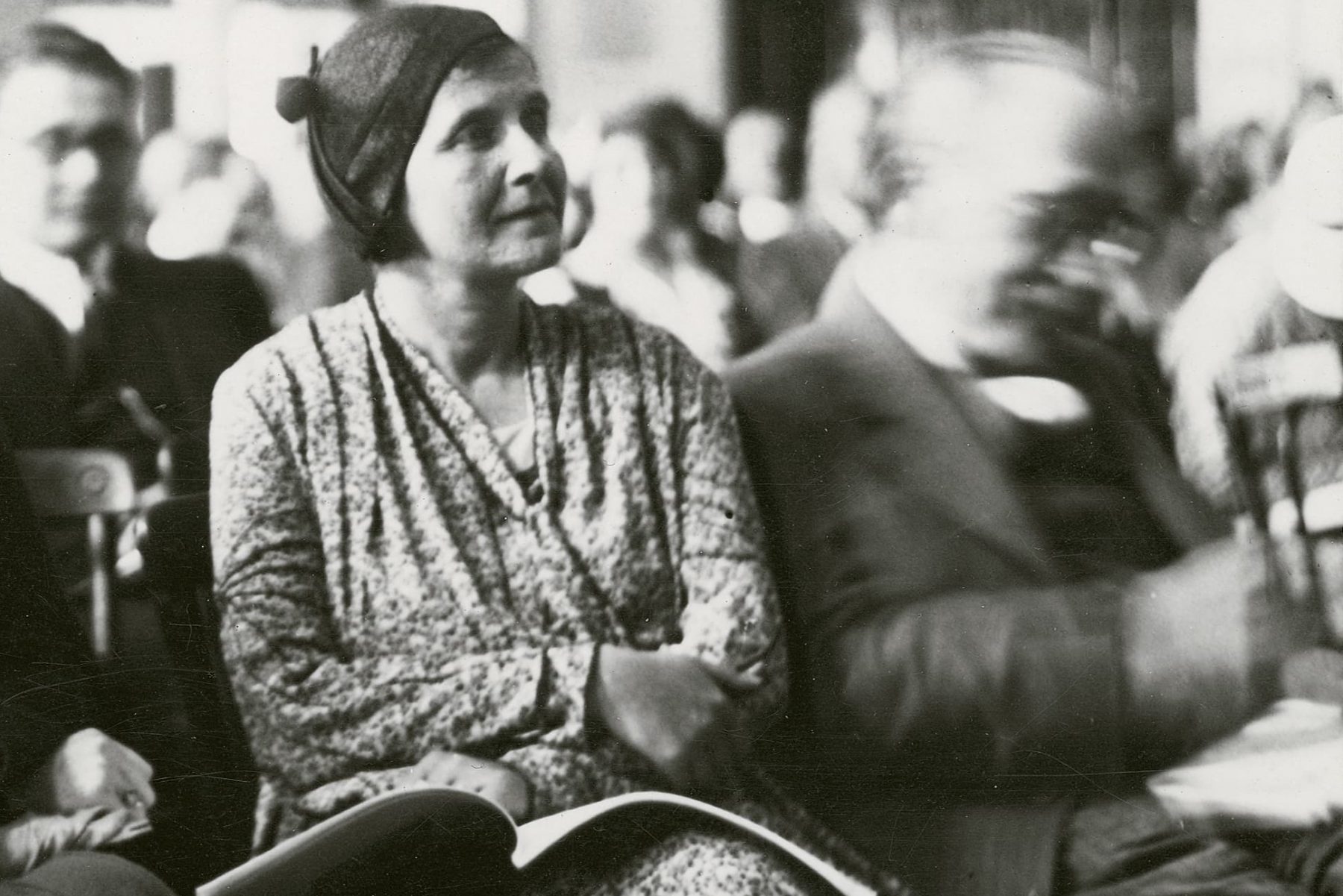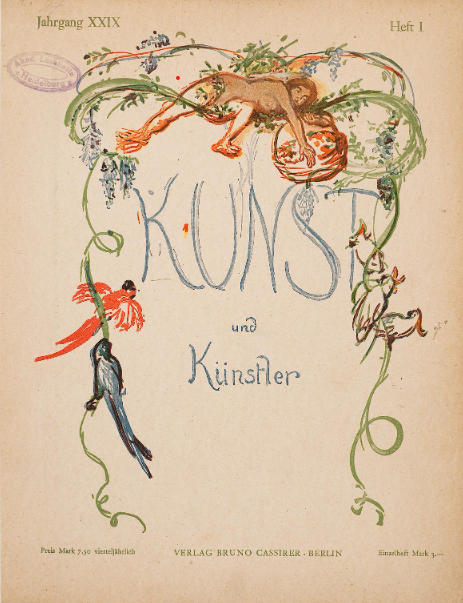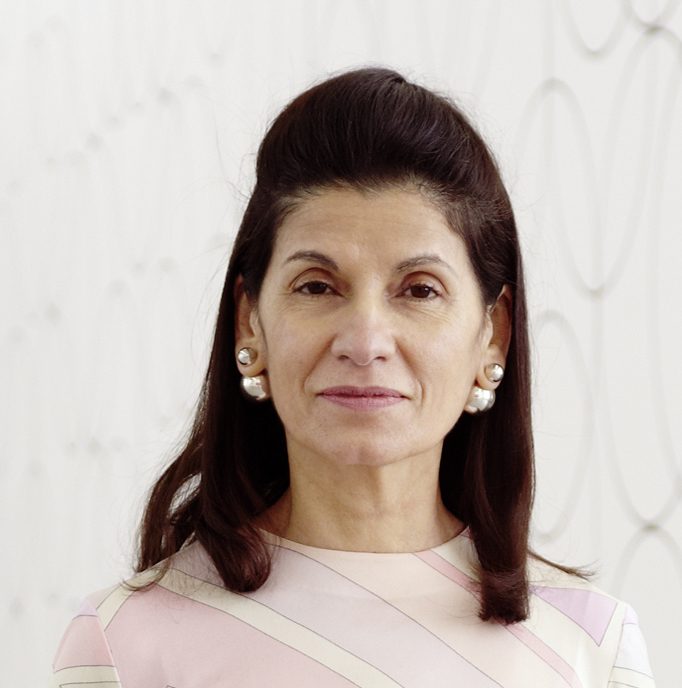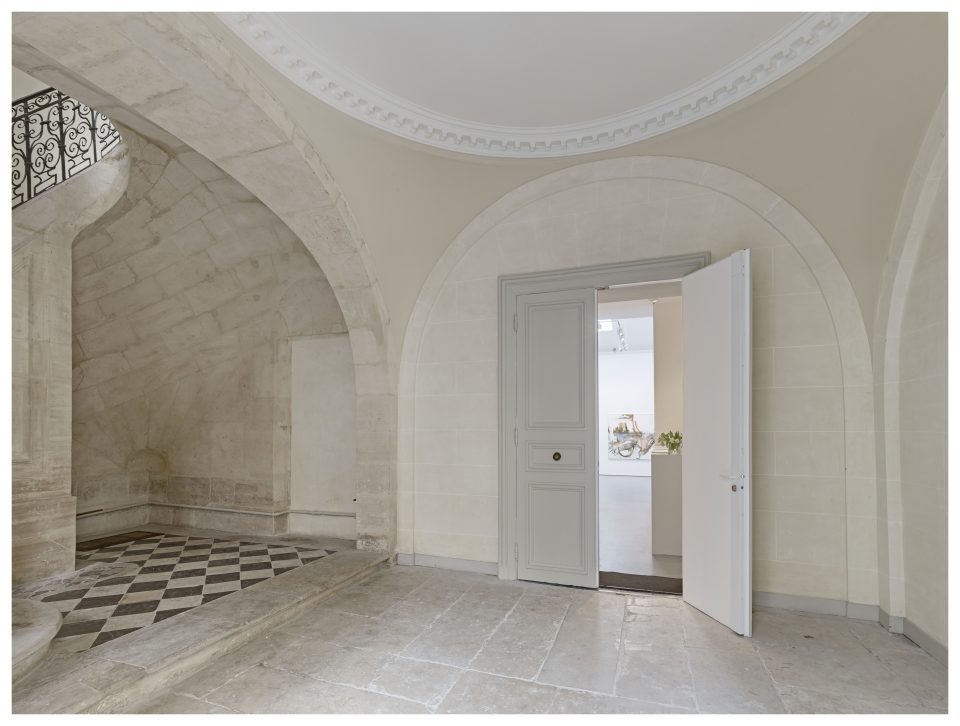
Revisited: The young artist and his dealer in Paris and Berlin
27.11.2023 by Samia Saouma
Article by Dr Grete Ring seen from a new perspective
In her early years, Grete Ring already published essays in the papers that defined the art canon of the time (Fig. 1). In 1931, Grete Ring wrote an article for the magazine Kunst und Künstler, Issue 5, entitled “The young artist and his dealer in Paris and Berlin”. In the text, she analyses the art market in both capitals. She favours the Parisian system, with its hierarchy of dealers who would buy the works from a yet unknown artists, rather than the Berlin model, where artworks by young artists are accepted on commission only. According to Ring, the latter does not inspire confidence in potential buyers if even their own art dealers do not want to buy the works beforehand.

Frontispiece of the magazine “Kunst und Künstler” from 1929, Issue 1
How would a comparison between the art scene in the two cities look today? Is Berlin still a magnet for contemporary art and artist? Are there only established names to be found in Parisian art spaces or is there also room for experiment?
As far as galleries are concerned, in the last few years several major galleries have opened branches in Paris, such as David Zwirner (in 2019) or Hauser & Wirth (in 2023). Also Berlin galleries like Galerie Max Hetzler (in 2014) and Esther Schipper (in 2022) made the move. We asked Samia Saouma, the director of the Paris branch, to respond to Grete’s article and report on her own findings when comparing the two cities.

Gallerist Samia Saouma, © Courtesy Galerie Max Hetzler Berlin | Paris | Londres. Photo: Def Image
Berlin-Paris: 2023
“Galerie Max Hetzler opened its first branch abroad in 2014 in Paris, later followed by two other venues, in London and in Marfa (Texas). It was a decision based on the fact that artists were very keen to show their work in the French capital, being quite besotted by the prestigious art culture.
The reputation of great museums such as the Louvre, the Centre Pompidou, which features the most important Modern and Contemporary Art collections in Europe, and the Musée d’Art Moderne de Paris with its dynamic programme, played an essential role.
We inaugurated our Paris space with an exhibition of Albert Oehlen, whose name is linked to the gallery since the early 80’s, and whom I had the chance to show in my gallery, in the early 90’s.

Gallery Max Hetzler in Paris, © Courtesy Galerie Max Hetzler Berlin | Paris | Londres. Photo: Def Image
The big difference between Paris and Berlin, I would say, is the contrast in the museum scene. In Paris, the above listed, along with many others are extremely active in the exhibition field.
Some shows at the Pompidou are considered historic, such as: Paris -Berlin, Paris – New York and Paris – Moscou, not to mention Qu’est-ce que la Sculpture Moderne, which was presented throughout themuseum, on each floor and featured works from Brancusi to Arte
Povera, Minimal Art…
Painters like to exhibit in Paris. It is particularly noticeable as, when in town, they spend days revisiting the collections of the Louvre, The Centre Pompidou or the Musée d’Orsay, not to mention for example the exhibitions as Manet-Degas at Orsay, or Paula Rego at the Musée de l’Orangerie, Giacometti and Egypt at the Fondation Giacometti, Monet-Joan Mitchell at the Fondation Louis Vuitton, David Hammons at the Pinault Collection and so on…
When visiting Paris for their shows, artists feel extremely stimulated and inspired.
In Berlin, there is very little to compare with when it comes to museum exhibitions. And it is hard to understand the real reasons maybe the lack of funds, the absence of philanthropy, or the lack of ambition of going beyond the presentation of the permanent collections could explain this.
On another note, Berlin remains very strong when it comes to artists living in the German capital and to the many inspiring galleries with impeccable programs.
For a while, Paris has had an art fair, FIAC. Paris + Art Basel took over the slot and proved to be a great success. Berlin tried to organize an art fair but it was not in the genes of the city.
Berlin can boast to have invented the Gallery Weekend concept that has been followed in so many art capitals. It remains the most successful one and an important date on the Berlin art calendar. In the past, collectors from several continents gathered to Berlin each year for this
occasion. Today it is mostly European and German collectors as the art world expanded so much. Nevertheless, every year it proves to be a big success.
The format of the gallery weekend versus an art fair is emblematic of the Berlin art scene, the focus being on exhibitions rather than on a selection of works at a fair.
Last but not least, gallery visitors tend to be more numerous in Berlin than in Paris. Maybe because the lack of great museum shows? In any case, the galleries in general are of high level and often « discover » artists that will later attract the attention of other galleries outside of Germany.
In Paris, we just started to organize Talks in the gallery and it proves to be a success, while Berlin has already established since a while the regular meeting with the artists in the context of their show.
Regarding the market, aside from two major collectors who opened an amazing Foundation and a unique and gorgeous exhibition space, French collectors tend to be maybe less engaged with the artists whose work they collect. It is quite impressive to see the number of German collectors who collect thoroughly each artist they admire, adding on a regular basis new works from new series or mediums. This is quite remarkable and should inspire museums and collectors abroad. I can name the Hoffmann Collection, Brandhorst Museum, Falkenberg Collection, Burda Museum, Langen Foundation, the Boros Collection.
Another Berlin asset: the number of large and / or impressive spaces that allow galleries to offer unique exhibition spaces to the artists. No other art capital can be compared on this level.”
Samia Saouma, Partner Galerie Max Hetzler, Paris